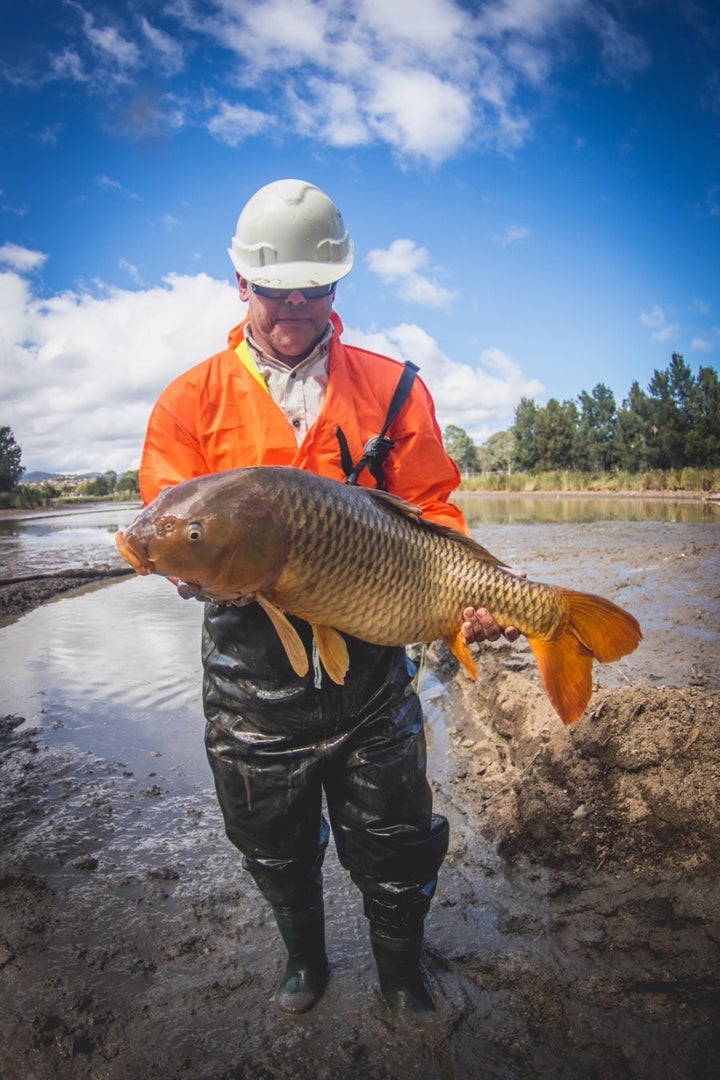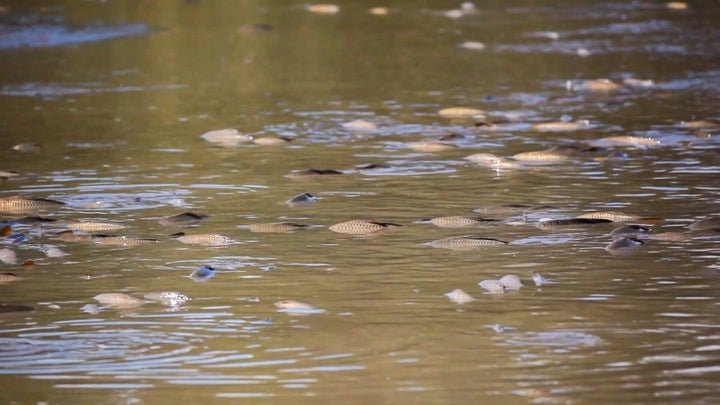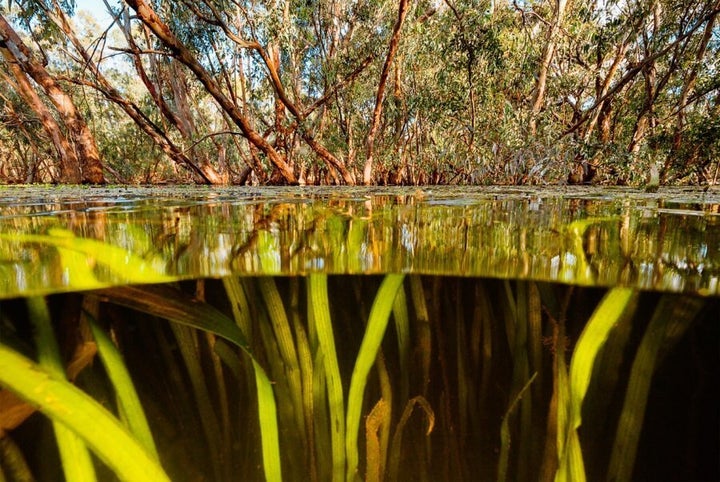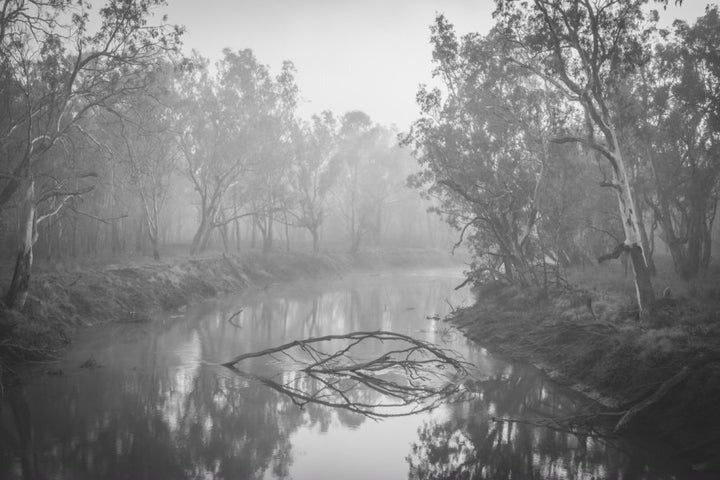Over the past 24 hours your news feed probably lit up once more with our nation's Deputy Prime Minister Barnaby Joyce enthusiastically announcing the imminent end of carp. Sorry, caaaaaarp in Australia.
While a combination of his raw enthusiasm, and the idea of using a herpes virus to end the reign of these mud-sucking monsters is fertile ground for entertainment, it's our job to develop a Plaaaaaaaan for success on this important national issue.
The National Carp Control Plan (NCCP) is working to control carp impacts on a continental scale. In theory, the job is simple: identify a smart, safe and effective suite of carp control measures -- including an assessment of a species-specific virus. In reality, it's a challenge. A lot is known about the carp virus; more needs to be known about how deployment might actually work.

Could Australia really control carp impacts? Could it be done at the continental scale? Could it be done without hurting the river? Could it be done to last? Those are big questions. It's our job to answer them.
The idea of biocontrol is controversial, with a chequered history in Australia. On our NCCP Facebook page, lively comments range from 'Bring on the virus!' to 'This is insane.'
Carp biocontrol has also attracted inaccurate and at times even alarmist reportage, much of which appears to originate in a fundamental misunderstanding of the NCCP's role. The NCCP's mandate is to coordinate research and public consultation necessary to determine the carp virus's potential as a biocontrol agent for carp. Unfortunately, the very knowledge gaps the NCCP was established to address also fuel speculation -- from rosy dreams of pristine carp-free rivers to apocalyptic nightmares.
This week, we released a strategic research plan to answer the questions on everyone's lips. While this work gets underway, we thought it a good time to reflect on what we already know.
So, let's take a deep breath and zoom out...

Carp are a problem
Carp impacts are well established. They muddy the water as they suck up food. This affects vegetation, water quality, invertebrates, native fish, fishing, tourism and irrigation. Carp cost us a lot as a nation -- one report suggests up to $500 million every year. So doing nothing to fix this problem is an expensive decision.
That problem is getting worse
Numerous approaches have been attempted to control carp numbers since their first explosion in the '70s. But over that time, carp populations have trebled. Carp are recognised as a significant pest species, both in Australia and internationally.
There are other problems
It's easy to blame carp for everything including your last ear infection, but the truth is our waterways suffer a range of impacts. These include altered river flows, historical land clearing, habitat removal, water pollution and so on...
Reducing carp impacts would help
In many Australian rivers, carp represent over 80 percent of total fish weight. The foods that carp eat get locked-up, away from the natural food chains that support our native species.
But it wouldn't fix everything
Controlling carp impacts would dramatically improve the health of our freshwater ecosystems, but will only get us so far. Other impacts, including altered river flows, land clearing, habitat removal, water pollution etc also need to be addressed separately.
Australia is spending a lot of money restoring rivers
The Australian Government is spending over $13 billion to return water to the environment. Millions more are spent every year on a range of other programs to help rehabilitate native plants and animals.
Controlling carp impacts would get us more bang-for-our-buck
These rehabilitation efforts are being undermined by carp impacts. We know that when water inundates river floodplains it can help native vegetation, waterbirds, amphibians and ecosystems. Unfortunately, it also provides perfect spawning habitat for carp. It's time to get carp out of the way, so that efforts to restore our rivers can also help native fish.
To reduce carp impacts at large scales, in a meaningful way, is a challenge
The sheer number of carp in our waterways is staggering. Early estimates range from 500,000 to 2 million tonnes of carp. Reducing that number, and the associated impacts, is a huge challenge. Right now, Australia spends a lot every year on carp control using commercial fishing, trapping, fishing competitions, and electrofishing. But these methods aren't delivering the outcomes we need. Put simply, we need a new approach.
There are very few methods available to deliver a major reduction in carp impacts
The obvious method for carp control is fishing. When people hear that Carp are actually one of the most widely farmed and consumed fish species on the planet, many quickly assume that as a nation we must be sitting on a gold mine. Unfortunately it's not that simple. The ready availability of carp globally keeps the price per kg low, and our distance to other shores means that it is very difficult to harvest, process and export carp profitably.
The carp virus is one method that would potentially be effective
The NCCP exists because of the carp virus. This is the first time a method has been available that could potentially control carp on a large scale in a meaningful way and break the stranglehold of the carp infestation.

There are risks, mainly because it would be so effective -- dead carp suck-up oxygen and smell bad
There's no getting around it: the carp virus kills carp. The main issue is, high numbers of dead carp could suck oxygen out of the water if not cleaned-up effectively. In areas with healthy native fish populations, that would be a risk. They also smell bad, which could impact tourism and other riverside businesses.
Our job is to coordinate an investigation into the feasibility of using the carp virus
The NCCP is a process, not a foregone conclusion. Yes, the carp virus is promising, but it's our job to test that idea objectively. We're embarking on a large program of scientific research and public consultation to get the answers and perspectives that government needs to make a smart decision.
The Australian Government just spent $5 million on research to answer the key questions
Our strategic research plan is the blueprint for how we will now partner with government agencies, research institutions and universities around Australia to inform decision-making on how best to go forward with carp control in Australia.
While that work gets underway, we are embarking on a program of public consultation
The NCCP is all about evidence-based planning. If governments decide to proceed with release of the virus and use of other carp control measures under the plan, implementation will require involvement from all levels of government, businesses and the community. As our research advances we will be touring carp-affected areas to share what we are learning, and listen to everyone's views. This will all help with development of the plan.
At the end of 2018, governments will make a decision
The results of the NCCP scientific research and consultation process will underpin a formal recommendation to government on how to tackle the carp problem.
That recommendation might include using the carp virus, it might not
The evidence at hand suggests that the carp virus is the best option we have to really reduce carp numbers effectively. However, if research conducted over the next 18 months indicates that risks outweigh the benefits this may not proceed.
Combined use of additional carp control methods will help
We know from lessons learnt from past use of viral biocontrol agents that there is no such thing as a silver bullet in pest control, and the best approach is to use a suite of measures to ensure long-term reduction in carp numbers. Carp control is no different. Studies suggest that that the carp virus is likely to dramatically reduce carp numbers, and that once down, their numbers are likely to remain at lower levels. However, combined use of an integrated program of control techniques is the best way to ensure long-term success. A key one could be commercial and recreational fishing, which would boost regional economies.
In any case, the NCCP is the process to address the challenge
We need to work collaboratively through this process to identify the best way to control carp. Both sides of government have come out in support of the process under the NCCP. Yes, timelines are tight, but it is amazing what can be achieved when Aussies work together.
It's one of the biggest opportunities in a generation
It's not every day that a nation gets the opportunity to properly consider tackling a major environmental issue. Irrespective of the outcome in relation to the carp virus, the NCCP process remains one of the biggest opportunities in a generation to improve the health of our waterways.
This process is worth supporting
We want to facilitate one of the most realistic, relevant and rigorous discussions that Australia has ever had. It's an aspirational, open and authentic process. It's a process, we believe, that's worth supporting.
The time has come to fix this problem. Caaaaaarpe diem.

ALSO ON HUFFPOST AUSTRALIA